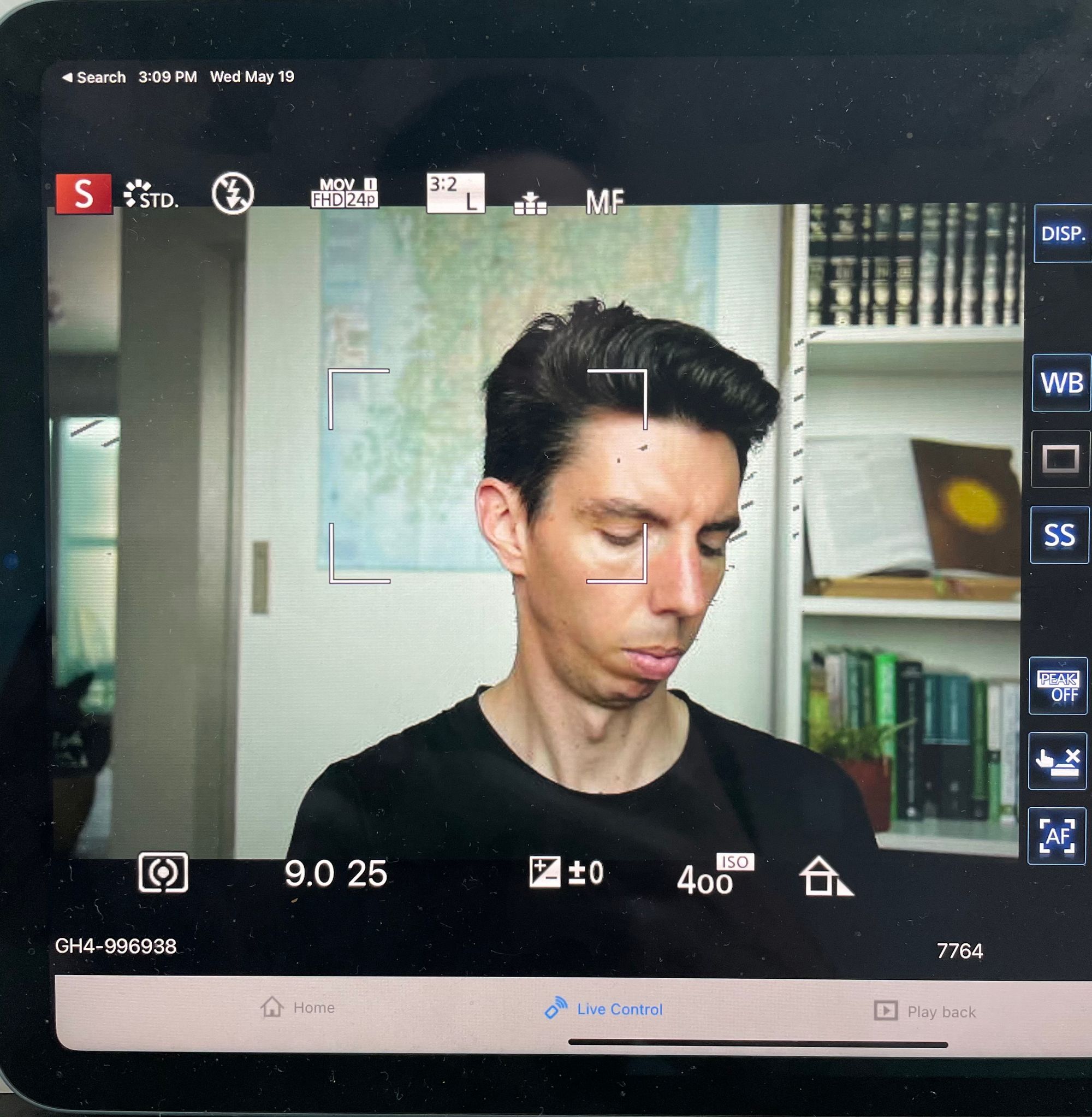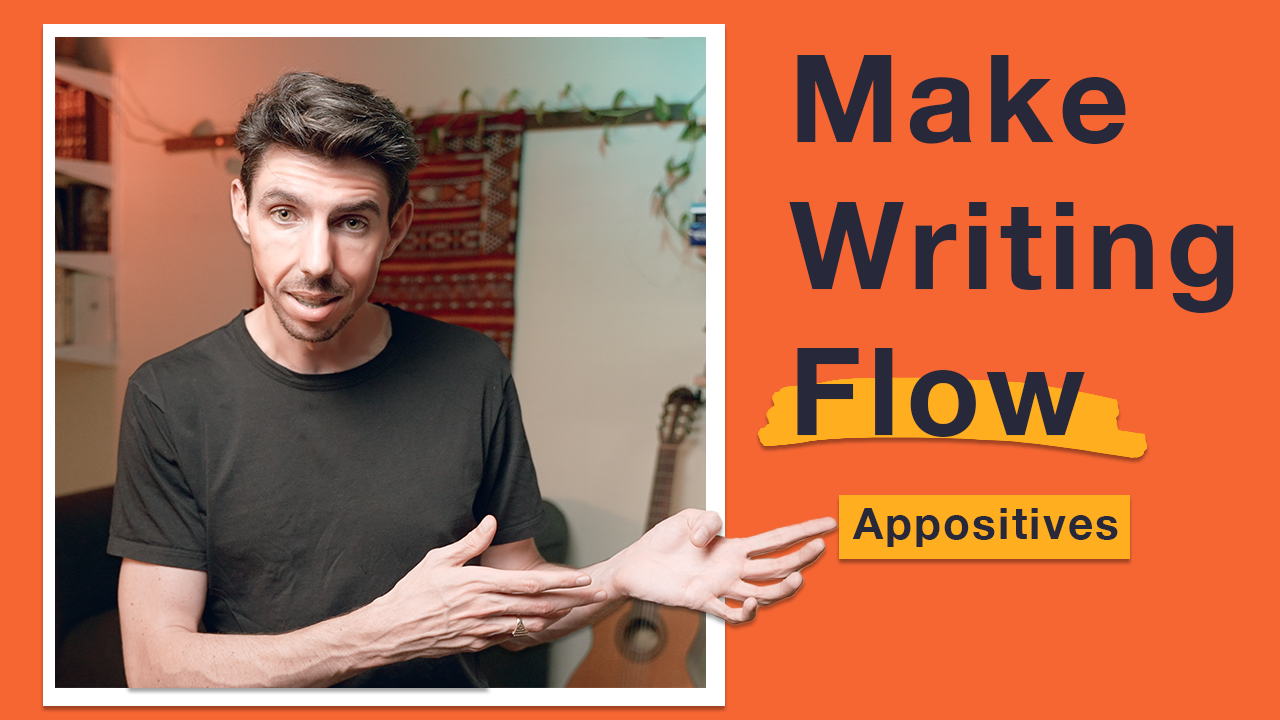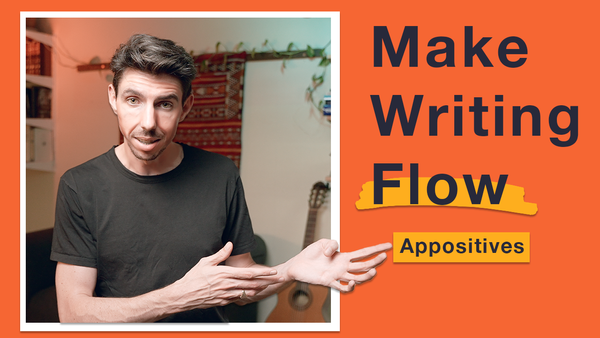Writing can't be taught through writing. So how to bring it to life?
💬 In this week’s issue:
- First get going, then get good. The trials and errors that led to my starting a YouTube channel.
- You, We, I. Usage of personal pronouns in academic writing.
- Should we use rhetorical questions in our introductions? There's a better way.
Was this email forwarded to you? Subscribe here!
🎥 Bringing Writing to Life
Starting a YouTube channel was the last thing I wanted to do.

In my work as an editor and writing coach, I come across a small set of issues in most papers - e.g., usage of the passive voice, paragraph development, the difference between thus and therefore.
I wanted to develop a resource that could easily explain the changes made to clients that would be informative and educational.
It began as a set of notes, which I would copy and paste as comments in the client's document.

That was fine for quick comments about usage, but topics that required more development became quite lengthy and difficult to read in the narrow comments of a word processor.
The next phase was to start building a Notion database for all the most common corrections. This allowed me to format the explanations more clearly, and I could provide a simple link to the page in the margins of the document.

Developing this database, I realized that what I was making was starting to resemble a book.
The problem was that the notes were disjointed; there wasn't any common thread holding them together. I began to consider how I might arrange these notes within a single narrative arc.
Around that time I had read Sapiens by Yuval Noah Harari, which is a sweeping history of mankind. If you haven't read it (and you really should do), the book opens with the smallest units of life and expands outwards to tell the story of human history until the present day:
ABOUT 1 3 . 5 BILLION YEARS AGO, MATTER, energy, time and space came into being in what is known as the Big Bang. The story of these fundamental features of our universe is called physics.
About 300,000 years after their appearance, matter and energy started to coalesce into complex structures, called atoms, which then combined into molecules. The story of atoms, molecules and their interactions is called chemistry.
About 3.8 billion years ago, on a planet called Earth, certain molecules combined to form particularly large and intricate structures called organisms. The story of organisms is called biology. About 70,000 years ago, organisms belonging to the species Homo sapiens started to form even more elaborate structures called cultures. The subsequent development of these human cultures is called history.
I wondered whether I could do the same for the English language: Begin with the smallest unit of meaning (the clause) and work my way outwards to the more complex structures, organizational themes, and rhetorical actions that comprise academic writing.
In autumn 2020 I began working on the first chapter.
I shared an early draft with a Korean colleague, who took an active interest in English and would often ask me great questions about the mechanics of writing, and she shared an invaluable piece of feedback that would have a big impact on the direction of this project. She said, The information is good, but it's hard to learn it through reading.
This might sound obvious in retrospect, but it was a big ah-ha moment for me. Of course, if I'm trying to educate English learners about writing, I won't be able to reach them through writing. I would have to bring these ideas to life.
My first attempt at making it visual was to learn how to create whiteboard animations in the style of RSA.
Making it visual with RSA-style animations
I did a little digging and found the design agency that produces these videos, We Are Cognitive. I pitched them my idea and them to quote a price. Altogether it would cost GBP 15,400 - but! If I act now then they would provide me with a discount of GBP 500.
Alas, this was slightly out of my budget. But I didn't drop the idea. I bought an iPad began researching how I might reverse engineer these illustrations through tutorial videos on YouTube.
At the time I didn't even have a YouTube account - I would watch it here and there, of course, but I didn't have any favorite channels or real understanding of how the platform worked. But over the next few months I would discover the wide world of educational content on YouTube - there were so many possibilities!
Unfortunately, there was very little of this innovation in the English education niche. On the contrary, the YouTube EFL space consisted mainly of teachers standing in front of a whiteboard offering standard textbook lessons. I started to think that I might be able to offer something unique.
Over the next few months I would have to learn it all - cameras, filming, editing, presentation. Moreover, I would need to find a way to animate these lessons to bring the content to life.
In my first video - which is super cringe and is unlisted but which you, dear subscriber, can view here→ - I used my iPad to record animations that I synced up over a talking head-style video.
In a later video - also cringe, also unlisted, but go ahead→ - I began using crude keyframe movements within my video editor to animate some of the points.
Later still, I began shooting B-roll→ to nest the lesson within the framework of a story.
Each of these made slight improvements on the last, but I knew something was missing. In order to achieve the quality I was striving for, I would need to up my game and learn animation software.
Over the past year I've been watching tutorials about After Effects, an industry standard animation software that all the major media channels use. It's highly likely that any 2D animation you've seen was produced on AE. I found this program to be way more technical and intimidating than my video editing software, and it took me a long time to dive in.
However, one of the best ways to learn something is not step-by-step according to the book; rather, it's by taking on a project. So for my latest video, I am very proud to say that I produced 100% of the animations myself.

There's still a lot of room for improvement, but I'm really excited to have brought these animations into my skillset.
Check out the full tutorial→
🫶 My Favorite Things️
📄 Article - AI-Detectors Biased Against Non-Native English Writers I find it incredible that so much effort is being put into developing software to identify text produced by AI. This latest effort found that 61% of the TOEFL essays written by English learners were identified as AI-generated (when, of course, they were not). This false positive probably stems from the fact that EFL students are so often instructed to write cookie-cutter 5-paragraph essays, the worn out patterns and tropes of which probably tripped the AI detector. I would bet that if these researchers used a sample of natural EFL student writing, rather than those from the TOEFL exam, they would not reproduce the findings.
🧑🏫 Quick Lesson - Common Mistakes in Academic Writing As I was reviewing the writing portfolios for one of my English classes, I was coming across a small set of common mistakes, so I produced this quick video tutorial. It addresses the usage of personal pronouns (we, our, people/they), rhetorical questions, and exclamation points in academic writing.
💔 Interview - Desire Is Unquenchable After a long battle with cancer, my friend Mari Ruti has passed away. I got the news Friday morning and am still processing it, some of which I was able to capture in the tweet thread below, but I just wanted to share a candid interview she did with me back in 2012. Mari was a very special person.
Mari Ruti's life is a testament to the central idea that ran through her extensive body of work - that only by grappling with one's own singular brand of suffering can one escape the repetition compulsion, rewrite destiny, and fashion a life worth living. https://t.co/Esg7LR5sAr pic.twitter.com/wuXi3RIOY3
— William Fitzpatrick (@WJ_RoK) June 9, 2023
💬 Quote
As Schopenhauer once put it, we insist on living our lives "with great interest and much solicitude as long as possible, just as we blow out a soap-bubble as long and as large as possible, although with the perfect certainty that it will burst."
Enjoy Shakespeare but don’t worry about him, use him to do something new—we’re here to write our own sentences.
❤️ Enjoy this newsletter?
If you think the content I make is valuable and want to support it, the single best thing you could do is to forward to a friend and let them know where they can subscribe (hint: it’s here).
Anything else? Hit reply to send me feedback or just say hello.
